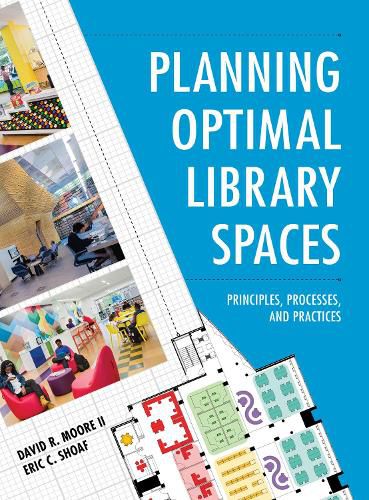Readings Newsletter
Become a Readings Member to make your shopping experience even easier.
Sign in or sign up for free!
You’re not far away from qualifying for FREE standard shipping within Australia
You’ve qualified for FREE standard shipping within Australia
The cart is loading…






Planning Optimal Library Spaces: Principles, Process, and Practices demystifies library space planning, inspires creative thinking, and offers immediate how-to steps to rectify seemingly hopeless situations. It describes an approach to library space planning that introduces and combines a phased implementation strategy with traditional space planning to allow library transformations and renovations to be done as a single project or a series of smaller, separate, and more manageable phased interventions. It allows libraries to meet current needs sooner, as smaller funding opportunities arise, instead of waiting on completely funded projects to develop.
Chapters cover the approach, the importance of community engagement meetings, collection storage strategies, the anatomy of a library project budget, recommendations for getting started, and case studies of both public and academic library planning projects with detailed phasing strategies.
Printed in full color with 148 images, this is a must-have book for librarians, architects, government/education administrators, and anyone involved with, or even thinking about a library planning or renovation project.
$9.00 standard shipping within Australia
FREE standard shipping within Australia for orders over $100.00
Express & International shipping calculated at checkout
Planning Optimal Library Spaces: Principles, Process, and Practices demystifies library space planning, inspires creative thinking, and offers immediate how-to steps to rectify seemingly hopeless situations. It describes an approach to library space planning that introduces and combines a phased implementation strategy with traditional space planning to allow library transformations and renovations to be done as a single project or a series of smaller, separate, and more manageable phased interventions. It allows libraries to meet current needs sooner, as smaller funding opportunities arise, instead of waiting on completely funded projects to develop.
Chapters cover the approach, the importance of community engagement meetings, collection storage strategies, the anatomy of a library project budget, recommendations for getting started, and case studies of both public and academic library planning projects with detailed phasing strategies.
Printed in full color with 148 images, this is a must-have book for librarians, architects, government/education administrators, and anyone involved with, or even thinking about a library planning or renovation project.